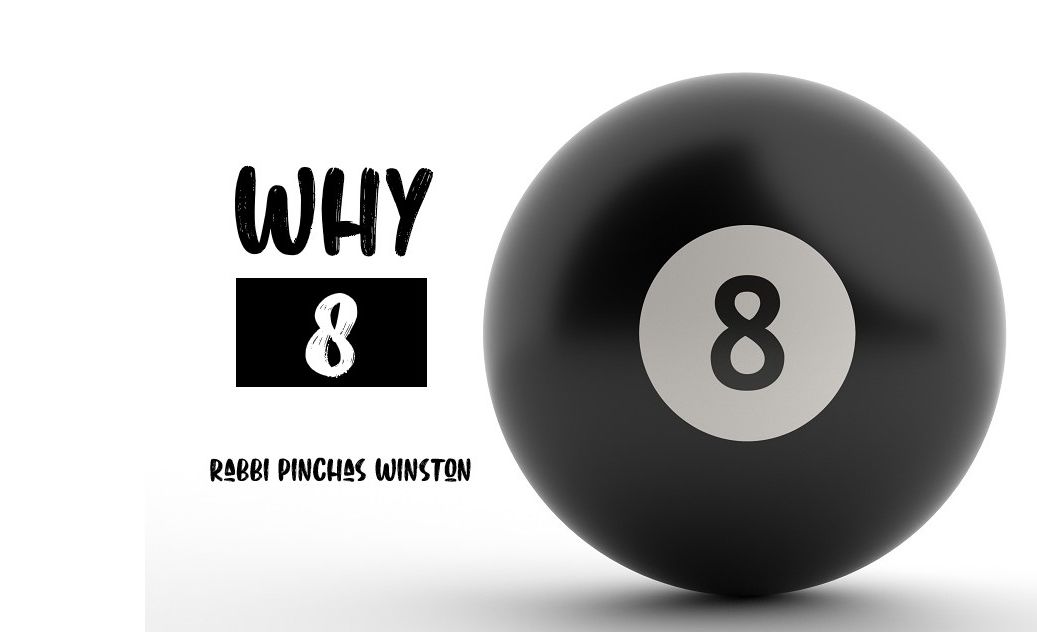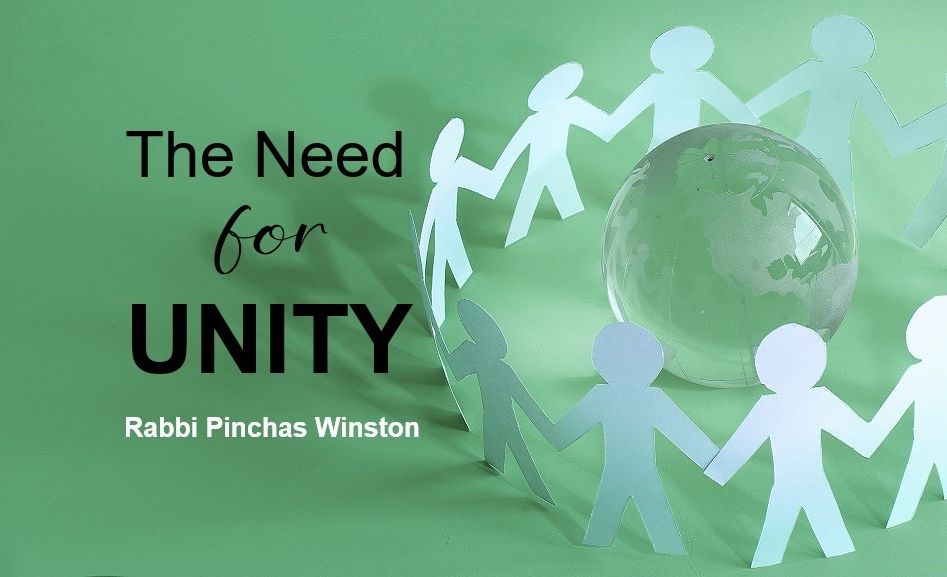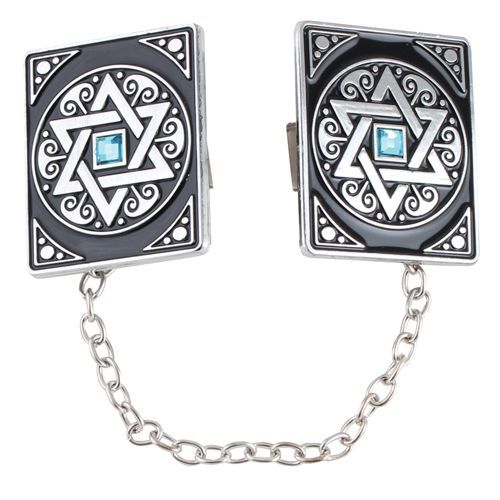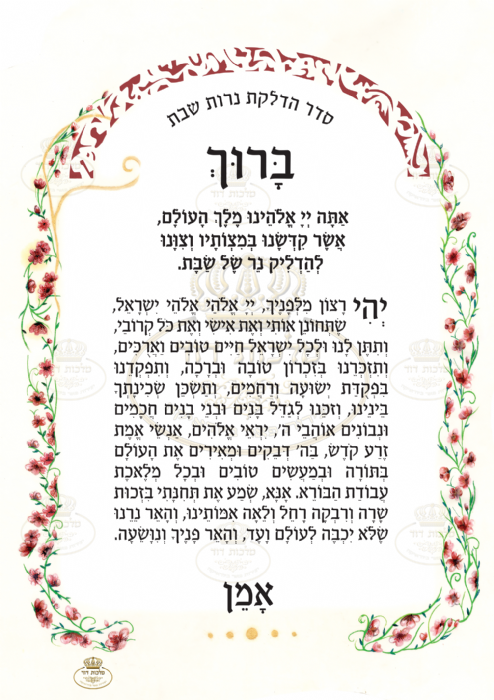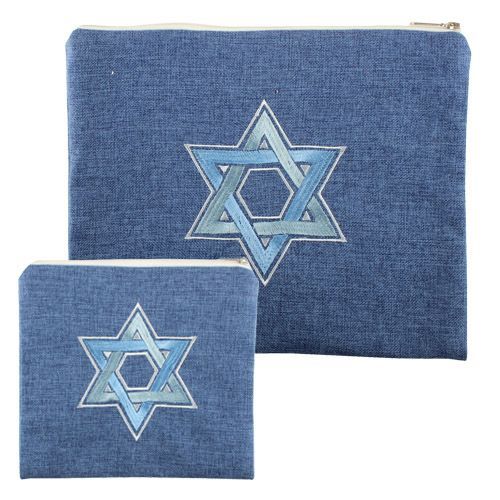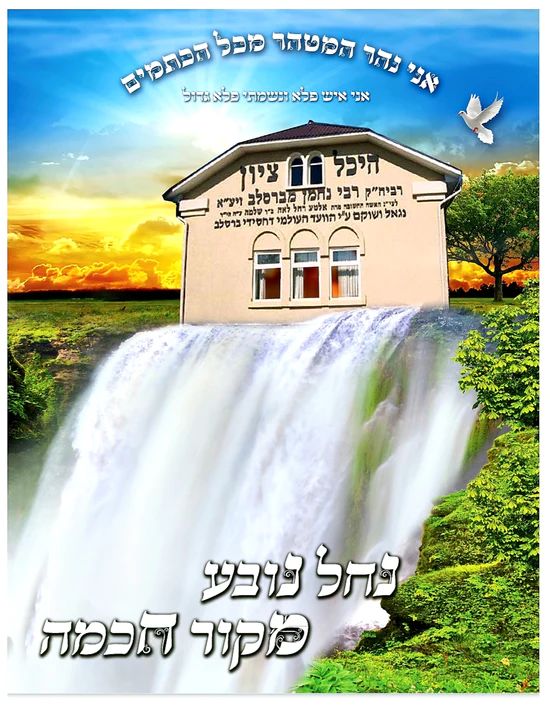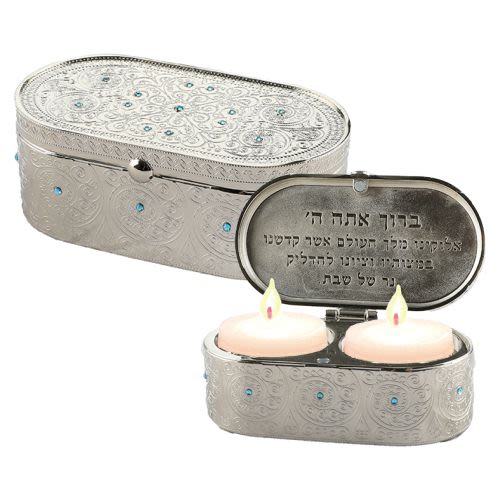FRIDAY NIGHT:
ה וְלֹֽא־יִקָּרֵ֥א ע֛וֹד אֶת־שִׁמְךָ֖ אַבְרָ֑ם וְהָיָ֤ה שִׁמְךָ֙ אַבְרָהָ֔ם כִּ֛י אַב־הֲמ֥וֹן גּוֹיִ֖ם נְתַתִּֽיךָ:
You shall no longer be called “Avram,” but rather “Avraham,” because I have made you a father of many nations. (Bereishit 17:5)
The transformation of Avraham’s name from “Avram” to “Avraham” had many effects, the least of which is probably the one mentioned in the posuk. After all, if we, his descendants, are the father of the nations today, we are certainly a greatly disliked and disrespected one. It must have been talking about only Avraham at that time, and his descendants only in Yemot HaMashiach.
The transformation of the name Avram into Avraham caused a change in his mazal, his destiny. When his name was still Avram, one of the greatest astrologists of his time told him that he and his wife Sarai were not destined to bear any children together. (Shabbos 156a) After his name was changed to Avraham and his wife’s name to Sarah, their mazal changed and they conceived and bore Yitzchak, the next link in the chain of the Jewish Nation.
Another important result of Avraham’s name change was the numerical value of his new name: 248. The addition of the letter Heh (ה) to “Avraham” added 5 to the total of his previous name, making the total equal to the amount of limbs a person has with which to serve G-d. Thus, the name Avraham symbolizes complete devotion to G-d, with every limb of his body, which, ultimately, is to be the legacy of the Jewish people.
It is important to understand that achieving a life of Torah is a process. Our history is a chronicle of that process, and despite our having strayed from it’s teachings and having experienced exile and all manner of traumas and suffering, we are still here, learning Torah, observing mitzvot, and exploring how to serve God with all that God gives to us.
Indeed, in evaluating one’s loyalty to G-d, one could take a tally of his or her limbs (which can be a generic term for any aspect of our physical existence), and see which ones are devoted to G-d, and which ones are not. There is a mitzvah for EVERY limb of the body, and our process is in learning what that relationship is, and how we are to use it to connect, to serve God.
For a man, it may be his arm: is it used for wearing Tefillin, for writing words of Torah, for earning a living in an honest manner. For a woman, it might be her head, or her hair, which must be covered if she is married. For either a man or a woman, in can be the eyes: Are they used to seeing that which brings one closer to G-d, or to partake of the physical world in a totally mundane manner?
It is an interesting way of measuring one’s devotion to G-d. Personally, I don’t mind thinking in Torah learning every conscious moment, but other aspects of me, such as my legs, don’t always run to do mitzvot when they should. My hands don’t always reach into my pocket to pull out tzeddakah for every poor person that crosses my path, because my heart has failed to feel for their situation as G-d might expect it to.
Not only is this a way to measure devotion to the service of G-d, but it is a way to measure the depth of one’s love of G-d. As the Talmud states, Avraham served G-d because He loved him with all of his being (Sotah 31a), and in a sense, the gift of the Heh was an acknowledgement from G-d of his intense love. For, nothing inspires a person to use their limbs to do something than love, and whereas fear will compel a person to do the minimum to avoid punishment, love compels a person to do everything he can within his ability to express his love in action every chance he can.
According to the Maharal (Tifferet Yisroel), that is why there are 248 Positive Mitzvot in the Torah, as opposed to 365 Negative Mitzvot, the number of solar days in year. Negative Mitzvot, explains the Maharal, are intended as guidelines just to help us to preserve the sanctity of the physical world, as if to say, “If you just don’t do this and just don’t do that, the world will remain a holy place to G-d.”
However, Positive Mitzvot go beyond simply preserving the world around us, reveals the Maharal. Rather, the alignment of the world within us with the One Who created the physical world, and allows us to build and express a relationship with Him. Negative Mitzvot are designed to keep the yetzer hara in check; Positive Mitzvot have been given to help us channel its powerful energy in the service of G-d, as Avraham and Pinchas did, as we shall see, reveal to us.
SHABBAT DAY:
ז וַיַּ֗רְא פִּֽינְחָס֙ בֶּן־אֶלְעָזָ֔ר בֶּן־אַֽהֲרֹ֖ן הַכֹּהֵ֑ן וַיָּ֨קָם֙ מִתּ֣וֹךְ הָֽעֵדָ֔ה וַיִּקַּ֥ח רֹ֖מַח בְּיָדֽוֹ:
Pinchas, the son of Elazar, the son of Aharon the priest, saw it, rose up from amongst the congregation, and took a spear in his hand. (Bamidbar 25:7)
With all the killing and revenge movies, not to mention suicide bombers, in the world today, the idea of a man getting up and attacking his enemy with a spear does not seem like a big deal. And, thanks to Hollywood, on the silver screen simple people can do the impossible, even fend off hundreds of enemies with a little intelligence and a lot of special effects. But how many people do it, or are even willing to risk it, in real life?
Almost none. And even from those who will, how many are motivated out of pure love of G-d, without any sense of personal revenge? So unlikely is this that, even though Pinchas had been acting on behalf of Torah, the people suspected he also had a personal debt to settle as well. This forced the only One who can know otherwise, the only One Who can check the heart of a man even better than man himself.
י וַיְדַבֵּ֥ר יְהֹוָ֖ה אֶל־משֶׁ֥ה לֵּאמֹֽר:
יא פִּֽינְחָ֨ס בֶּן־אֶלְעָזָ֜ר בֶּן־אַֽהֲרֹ֣ן הַכֹּהֵ֗ן הֵשִׁ֤יב אֶת־חֲמָתִי֙ מֵעַ֣ל בְּנֵֽי־יִשְׂרָאֵ֔ל בְּקַנְא֥וֹ אֶת־קִנְאָתִ֖י בְּתוֹכָ֑ם וְלֹֽא־כִלִּ֥יתִי אֶת־בְּנֵֽי־יִשְׂרָאֵ֖ל בְּקִנְאָתִֽי:
G-d told Moshe, “Pinchas, the son of Elazar, the son of Aharon the priest, stopped My anger towards the Children of Israel because he was zealous on My behalf, which prevented Me from destroying them because of jealousy. (Bamidbar 25:10-11)
Well, if YOU say so, G-d, then it must be true. And, if it is indeed true, then what a tremendous risk Pinchas took for the sake of truth, killing a prince before the eyes of the entire nation. What compelled him to act so zealously, and so selflessly?
The posuk tells us:
Pinchas . . . took a spear in his hand.
There are a few words for spear in Hebrew, but the one used by the posuk – romach – is spelled: raish-mem-chet (מרח), and happens to have the gematria of (200+40+8) 248, the same numerical value of “Avraham.” It’s as if the Torah is saying that seeing what Pinchas did inspired him to take Avraham in his hand, and attack Zimri and avenge the very values upon which the Jewish nation was founded.
After all, the very act that Zimri was performing at the time was the ultimate contradiction to that which earned Avraham the additional Heh in the first place. Avraham’s completion came through Brit Milah, the last part of his physical being that he gave over to the service of G-d. Love of G-d means expressing love to others in the way that G-d Himself has sanctioned; this makes it holy. Zimri’s act of “free love,” particularly with a gentile and in public was an act of hatred for G-d, and this invoked the Avraham within Pinchas and compelled him to act. Thus, like his forebear Avraham, Pinchas also earned an extra letter, a Yud (י), as a result of his intense love of G-d.
In fact, combined, the two letters spell the Name of G-d, and are the first two of His Ineffable Name, the Four-Letter Name we don’t pronounce as it is written. It’s as if Pinchas’ act of zealousness was Part 2 of Avraham’s own, the likely extension of all that Avraham began, connected in time through the concept of the Brit – the Covenant – the very symbol of our relationship and devotion to G-d.
It’s not that Avraham wasn’t perfect, or could not have finished the job he started. But, as the Kabbalists explain, G-d is like a craftsman Who prefers to take raw material, shape it, and over time bring out its perfection and beauty. This way, creation leaves room for man and his ability to use free-will, the ultimate purpose of creation.
Thus, Avram became Avraham, but Pinchas, because of his heroic act and the Yud he received, became Eliyahu the prophet, and later Eliyahu the angel. For, as we shall soon see, b’ezrat Hashem, the letters Heh and Yud are the basis of everything and all we are here to accomplish, and knowing this is what allows a person to make the break from mundane reality and underachievement.
SEUDAH SHLISHIT:
ד אֵ֣לֶּה תֽוֹלְד֧וֹת הַשָּׁמַ֛יִם וְהָאָ֖רֶץ בְּהִ֣בָּֽרְאָ֑ם בְּי֗וֹם עֲשׂ֛וֹת יְהֹוָ֥ה אֱלֹהִ֖ים אֶ֥רֶץ וְשָׁמָֽיִם
“These are the generations of Heaven and Earth in the creating of them (behibar-am) . . .” (Bereishit 2:4)
Rebbi Yehudah bar Rebbi Eloy elucidated: The Holy One, Blessed is He, created two worlds, one with a Heh and one with a Yud. I do not know if the World-to-Come was created with a Yud and This World with a Heh, or if This World was with a Yud and the World-to-Come was with a Heh. But then it says,”These are the generations of Heaven and Earth in the creating of them (behibar-am) . . .” (Bereishit 2:4); don’t read “behibar’am” (i.e., in the creating of them) but “b’Heh bar’am” (i.e., with a Heh they were created). Thus we see that This World was created with a Heh and the World-to-Come was created with a Yud. (Menachos 29b)
Before explaining what this means, we pointed out last week that, besides the new arrangement of the letters suggested above, a third arrangement spells b’Avraham, an allusion to Avraham back at the beginning of creation. Now, the Talmud is using this word as a source to say that the physical world in which we live was created with the letter Heh, and it would not be a stretch of the imagination to assume that this is also the source of the letter Heh that was added to Avram to become Avraham.
The Yud, on the other hand, being the source of the eternal World-to-Come is the Yud that was added to Pinchas’ name which resulted in his never having to die. Eliyahu, formerly Pinchas, went up to Heaven in a fiery chariot, and ever since returns on various occasions, one of the most important ones being his heralding in of the arrival of Mashiach.
So, what does it mean that the World-to-Come was created with the letter Yud, and that this World was created with a Heh? Is this just an analogy, or it is to be taken literally, which in Kabbalah we tend to do?
Regarding the letter Yud, the Maharal explains in his commentary on the Haggadah, that it represents “pashtus” – sublime simplicity, like matzah itself. Unlike other letters of the Alpeh-Bais, a Yud is not composed of parts of other letters, like the Heh, for example, which is composed of a Dalet and a Vav. Thus, it is the perfect expression in this world of the World-to-Come, which will be such total and sublime simplicity.
Thus, in the Sefirot, the Yud symbolizes the level of Chochmah, undistilled and pure wisdom in abstract form. Heh, on the other hand, corresponds to the level of Binah – understanding – which represents the level of relationship to knowledge. Thus, the Talmud explains that it is the letter Heh that was used to create This World, for it makes teshuvah possible, which is always a function of Binah:
Teshuvah is a function of Imma (Binah) . . . (Sha’ar HaGilgulim, Chapter 21)
Indeed, according to the Talmud, the Heh is formed in such a way as to indicate this reality, with an opening at the bottom through which a person can fall, but another one at the top left through which a person can climb in through and once again enter after having repented. And thus, by performing the Heh, so-to-speak, one merits the Yud, that is, the World-to-Come.
And, there is another interesting example of this, one that is not so obvious, but obviously has much to do with this time of year.
MELAVE MALKAH:
כג וַיְהִ֖י כָּל־יְמֵ֣י חֲנ֑וֹךְ חָמֵ֤שׁ וְשִׁשִּׁים֙ שָׁנָ֔ה וּשְׁל֥שׁ מֵא֖וֹת שָׁנָֽה:
כד וַיִּתְהַלֵּ֥ךְ חֲנ֖וֹךְ אֶת־הָֽאֱלֹהִ֑ים וְאֵינֶ֕נּוּ כִּֽי־לָקַ֥ח אֹת֖וֹ אֱלֹהִֽים:
Chanoch lived for 365 years. Chanoch walked with G-d, and was no longer, because G-d took him. (Bereishit 5:23-24)
Interesting. Usually people who walk with G-d are the ones who are left behind, not taken. Why would walking with G-d result in a premature death for Chanoch?
Rashi explains:
CHANOCH WALKED WITH G-D: He was righteous, but it was easy for him to turn to evil. Therefore, the Holy One, Blessed is He, hurried his death before its time . . . (Rashi)
According to Seder HaDorot, Chanoch actually wavered back and forth between the two extremes, one week being righteous and the next week doing evil. Therefore, on one occasion, while Chanoch was righteous once again, G-d took him before he could return back to negative ways. And thus, according to the Midrash, Chanoch went out in a blaze of glory, literally, ascending to Heaven on a fiery horse, never having to die and becoming the angel “Mattat.”
The name “Chanoch” is spelled: Ches-Nun-Vav-Chof (חֲנ֖וֹך), and the root of it is the first two letters, which of course spell the very reason why Noach was saved from the Flood: chayn. The last two letters of his name, Vav-Chof, have the gematria of 26, the number of G-d’s four-letter Ineffable Name, perhaps an allusion to the fact that Chanoch walked with G-d, just as Noach did after him.
However, if we take that letter Heh with which G-d made creation, and later added it to Avram’s name to make it Avraham, and then attach it to Chanoch’s Name, we arrive at a familiar word: Chanukah! Perhaps it was precisely this that G-d added to Chanoch that allowed him to ascend on his fiery horse, and ascend as an angel, just like Eliyahu did much later in the future. He ascended as a human Chanukah candle, so-to-speak.
After all, what does Chanukah represent, if not Jewish self-sacrifice to preserve a Torah-way of life? Chanukah is the celebration of the hidden soul that surfaces in the service of G-d, like the hidden Oral Law that the Hellenists of the time had sought to destroy. Thus, it is the celebration of chayn, which is the light given off when the soul is allowed to reveal itself to the outside world.
And, it is the Heh with which G-d made creation that draws out the soul from within a person. It is the Binah – Torah understanding- that the Heh represents and which one achieves that unlocks one’s potential to devote all of his or her limbs to the service of G-d and His will. As Shlomo HaMelech taught in his wisdom:
ד אִם־תְּבַקְשֶׁ֥נָּה כַכָּ֑סֶף וְֽכַמַּטְמוֹנִ֥ים תַּחְפְּשֶֹֽנָּה:
ה אָ֗ז תָּ֖בִין יִרְאַ֣ת יְהוָ֑ה וְדַ֖עַת אֱלֹהִ֣ים תִּמְצָֽא:
If you seek it like money and pursue it like buried treasures, then you will understand fear of G-d and find G-dly understanding . . . (Mishlei 2:4-5)
Then you will find “it”? What is IT? It is the Heh with which and for which G-d made creation, and with it you can achieve “romach” – whose gematria is that of Avraham with the Heh – in your hand, and be able to devote all of your being in the service of G-d, as Avraham did, and Pinchas did after him.
***
Pinchas Winston is the author of over 95 books on various topics that deal with current issues from a traditional Jewish perspective. He has also written on the weekly Torah reading since 1993, called “Perceptions”, as well as on current topics and trends affecting Jewish history, past and present. One of his missions is to make the depth and beauty of the more mystical teachings of Torah understandable and accessible to those who can really benefit from them. Visit his website at thirtysix.org.




